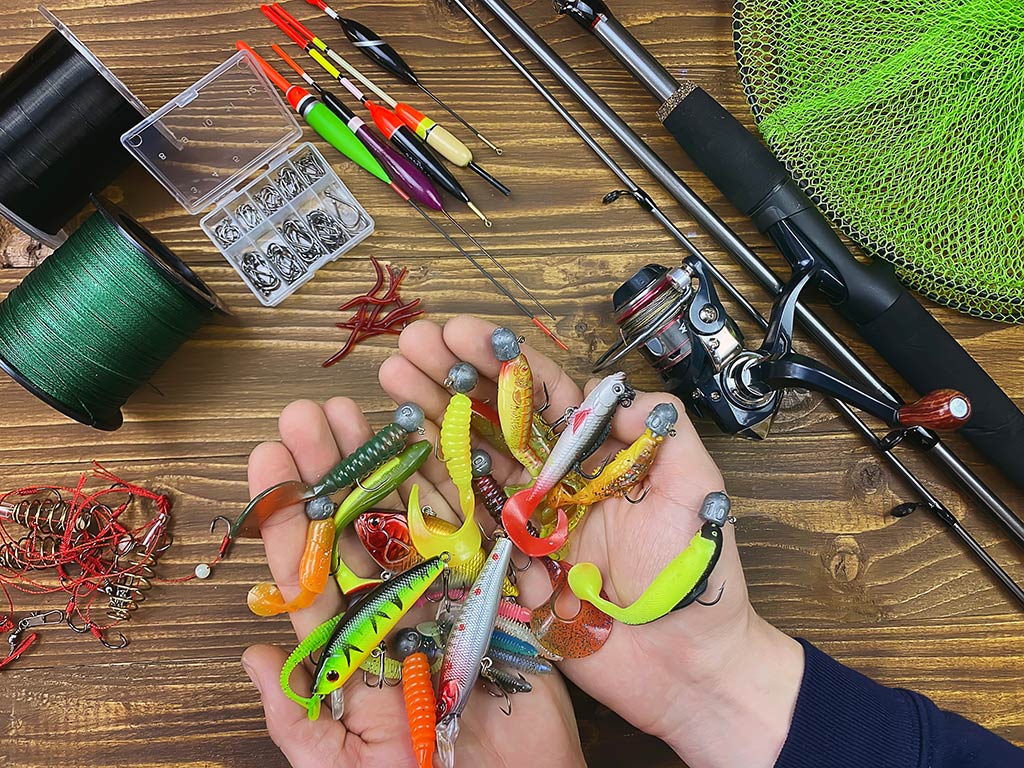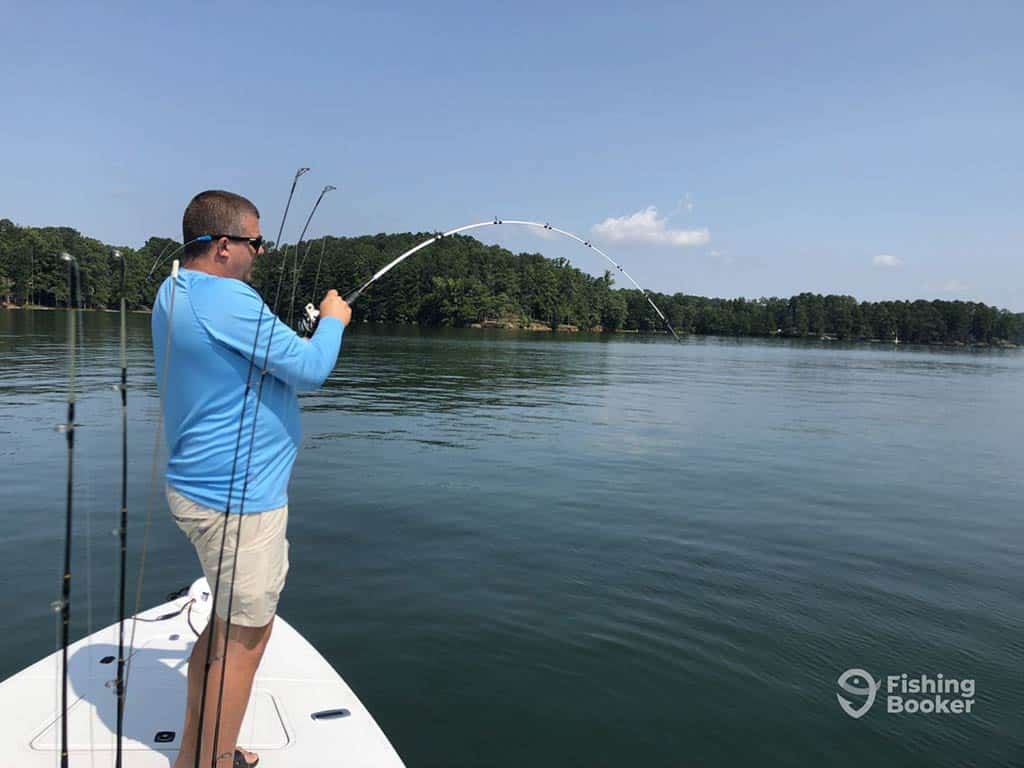Reading Time: 5 minutesThere are plenty of ways to catch Walleye but arguably none are as effective - or fun - as jigging. It’s the go-to technique among many experienced Walleye anglers who catch plenty of decent-sized fish, time after time. While I wouldn’t recommend eliminating other methods of fishing from your arsenal, you should keep jigging high on the list of priorities. It’s one of the most consistently productive ways to catch Walleye anywhere you find them.

But what makes jigging so special? How can you master the art of it? I’ll answer these questions and much more as we dive into the world of Wallye jigging. By the time you’re done reading, you’ll be an expert in the theory and it’ll be time to get out there to start jigging yourself!
Why choose jigging for Walleye?
When you hear that Walleye are nicknamed “paper mouths,” you should have an idea of why jigging works. Despite being predatory fish, they often deliver subtle strikes. The constant contact and sensitivity of jigging combines well with the ability to stay in the strike zone for a deadly presentation and hook set.
You can get right on top of fish, make a great presentation, and connect quickly on the hook set. The thin lips of the Walleye will quickly spit a lure, so the sensitivity of jig fishing leads to better hook sets and fewer fish lost.
Another reason for the success of jig fishing is the strike zone factor. When Walleye group together, anglers can get in the zone and stay there. Trolling is great when the fish are spread out but it means you’ll be cruising through more empty water than not if the fish are schooled and concentrated. This is when jigging comes in extra useful.
Best Jigs for Walleye Fishing

Jigs for Walleye come in various shapes and sizes. Some have a single hook while others have multiple, treble hooks attached for big water fishing. Experiment with different styles and actions to find the most effective options in your area. In any case, here’s a rundown of some of the most popular
- Traditional jigs. The basic jig consists of lead molded over a hook. You can use the hook itself with a variety of baits or artificial materials. Add live bait to a bare jig hook or add a soft plastic worm or bait fish. You can also tie or buy tied jig hooks with bucktail or feather presentations.
- Jigging spoons. These more closely resemble a lure or crankbait, but they’re weighted and built over a jig platform. They fish well when swimming but really shine when you jig them in a vertical manner - hence their name! Drop the spoon and repeat a lift-drop sequence. The shape creates attractive fluttering and swimming actions on the drop.
- Knife jigs. You’ll find many knife jigs geared towards saltwater fishing but I’ve been pulling them into my freshwater game more frequently. These lures are super versatile and they fish well when vertical jigging or with a cast and retrieve.
Walleye Jig Presentations
The various presentation styles are part of the reason jigs are so versatile. You can bounce, swim, or suspend without ever changing the lure. Try these presentation styles in different conditions for Walleye fishing success…
Vertical Jigging

Photo courtesy of Big Bite Charters - Lake LanierIt doesn’t get any easier than vertical jigging. Setup in a boat or off a dock and drop your jig. You can drop to the bottom or use electronics to locate fish and determine the optimal depth. When the jig reaches its bottom, either leave it suspended or lift and lower the rod to impart action. Experiment with slow lifts and more rapid action to find the best approach on any given day.
Drift and Sweep Strokes
Drifting in a boat while jigging is a great way to cover water while giving a natural presentation. You can impart a vertical action on the rod but I really like a sweeping motion to swim the jig into the drift direction. The subsequent slack allows it to sink and maintain depth without too much tension.
Swimming Jigs
When Walleye are chasing and hitting hard, try swimming a jig. Cast like you would using any lure and then retrieve. Add bumps and sweeps with the rod for extra motion as you do so. The jig will swim while covering more water than with a vertical approach.
Snap Jigging
Combine trolling tactics with jigs to cover more water and more vertical distance within the water column. Run the boat at a trolling speed with the jig at a casting distance or slightly farther behind the boat. Rapidly lift and drop the rod tip to raise and lower the jig in the water column. This technique is aggressive and can produce intense strikes. It’s especially nice on big lakes where the fish are spread out.
Where to Chase Walleye

Photo courtesy of Pathfinder Sport Fishing LLCFrom the Great Lakes to meandering local rivers, jig fishing is effective for Walleye wherever you find them. When you approach shallow or smaller bodies of water, consider sizing down to a ¼ oz-range jig. In big open waters, increase in size as necessary.
The main ingredient for success is finding the fish and the right depth for the presentation. Once you have that factor sorted, the odds of jigging success increase substantially.
Where will you drop a jig for Walleye?
When it comes to jigging, the techniques and lures are all very intuitive and easy to understand. Put in the time to really learn and understand your fishery, and success will soon follow. While jigging for Walleye, you’re also likely to encounter and catch other species. It’s a technique that works for just about anything. It’s high time you gave it a try!
What are your favorite Walleye jigging styles? Any favorite hotspots? We’d love to hear from you in the comments below!
The post Walleye Jigging: An Angler’s Guide appeared first on FishingBooker Blog.
https://fishingbooker.com/blog/walleye-jigging/
 CampingSurvivalistHuntingFishingExploringHikingPrivacy PolicyTerms And Conditions
CampingSurvivalistHuntingFishingExploringHikingPrivacy PolicyTerms And Conditions
